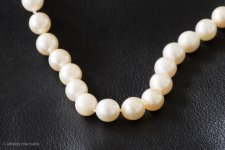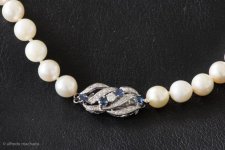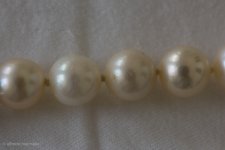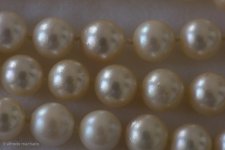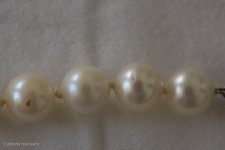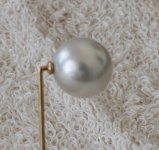
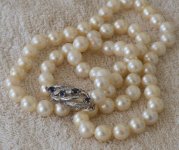
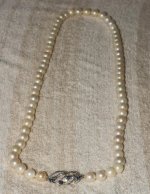
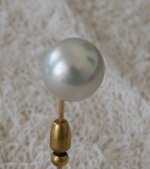
The pictured necklace is 71cm in lenth with 68 pearls mostly between 9.02mm to 9.47mm apparently some variation in shape, color and surface. Clasp is almost certainly platinum one diamond, four saphires and pave diamonds. Inscription on broach "3129" and "C" on reverse. Purchased by my grand-father, a Venezuelan/German, first quarter 20th century. Necklace restrung 30 years ago and stored since.
Mens tie pin with 12.3mm almost perfectly round white/silver pearl on 18K gold pin. Suspect about same age as above.
Curious weather I should invest in gemological certification to determine nature of the pearls. Thank you.

